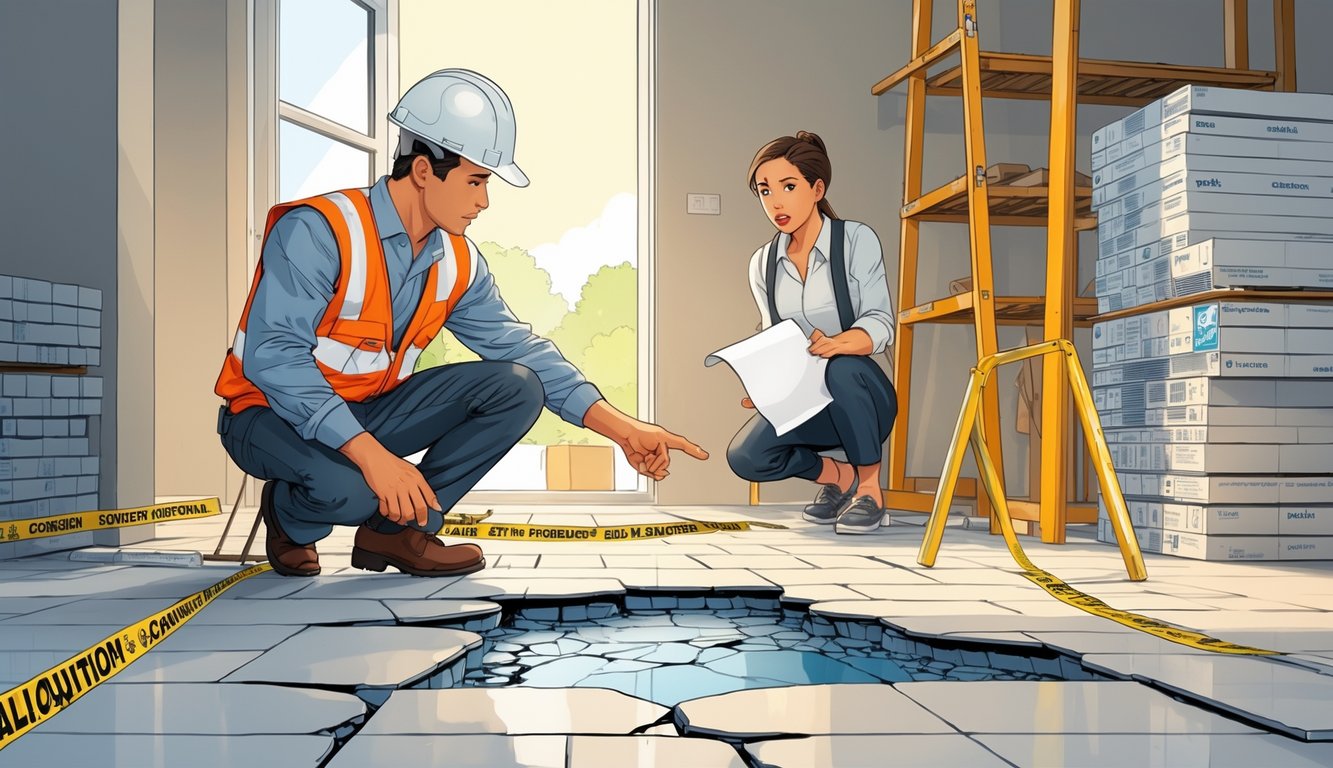
Contractors’ Recent Admissions About Pricing

Nobody saw this coming. Maybe the warehouse guy, muttering about missing pallets. Now my contract spreadsheets need so many edits, they’re basically crying for help. Homeowners scroll through invoices looking for “hidden fees.” Spoiler: there aren’t any left to hide.
Recognizing Cost Increases Early
Suddenly every contractor—big names, small shops—admits they should’ve noticed the price jumps way sooner. It wasn’t dramatic, just a lot of “wait, that can’t be right” checks on supplier websites. Associated Builders and Contractors tracked a 0.5% jump in construction input prices in just one month, and somehow steel costs bleed into tile shipping. Don’t ask me how.
Clients ask if they’re buying marble, not plain wall tile. I rewrite item descriptions—Porcelain subway tile, plain grey, $9.62/sq ft—hoping nobody compares to last year’s $6. Contractors with escalation clauses (victorinsurance.com talks about them) at least had a little buffer. Nobody trusts receipts now. Price adjustments just turn into awkward kitchen-table talks. I waste more time explaining tariffs than writing bids. No idea how many suppliers I’ve flagged “maybe honest.”
Transparency with Itemized Invoices
If the invoice isn’t itemized, clients turn into auditors. Someone once screenshotted a grout line item and sent “??” so I had to call and explain because nobody trusts lump sums. So now, yeah, contractors (me included) finally admit—itemized invoices aren’t about looking good, they’re about survival.
A clear invoice means I’m not hiding “Miscellaneous Materials $500.” You’ll see Ceramic tile: $480 (40 sq ft @ $12/sq ft), Thinset: $60, Delivery: $35. That way, everyone can point fingers at the real culprit (right now, shipping fees are public enemy #1). One client, after last December’s 19% AGC-flagged cost jump, demanded every delivery receipt. I started attaching PDFs and suddenly nobody mentions “hidden costs”—they just groan at the totals. I once split out every hex tile, and the homeowner still hunted for a coupon code. People want certainty, but in 2025, an itemized invoice just buys me a little peace.
Understanding Construction Contracts
Should’ve been easy—sign the contract, order the tile, done. Nope. Blink and the price jumps three times in a quarter. Suddenly the fine print says “as per Escalation Clause 14(b)” and nobody knows what that means except maybe the lawyers. Clients ask if I make this stuff up. I wish I did. Surprise invoices are the worst.
Common Escalation Clauses
Last year, I watched a bland white porcelain tile quote rocket up by 42%—my supplier threw around “commodity volatility” like it was a weather forecast. When the contract’s escalation clause turns into a math riddle, I just want to bail. My accountant flagged the “Unit Price Contract” mess: every extra square meter gets recalculated if cement or tile costs jump, and it’s buried in some table under “Material Price Adjustments.” Contractors, though, they’re obsessed with time-and-materials for undefined scope—because who doesn’t love a moving target? Especially when change orders pile up and nobody’s sure who’s paying for what anymore.
If you spot fluctuation or escalation provisions, don’t just skim—those things are sneaky. Sometimes they’re glued to a random third-party index (once saw one tied to a monthly BLS update, and honestly, I couldn’t make heads or tails of it, neither could the client). The base price? Often vague on purpose. NEC, JCT, FIDIC—each one sneaks in their own escalation loophole, usually in some forgotten appendix. Most people never even see the footnotes. I heard a project manager mumble, “It’s fixed price—until it isn’t,” and yeah, that’s about right.
Force Majeure Clauses Explained
People toss around “force majeure” like it’s just for hurricanes or wars. Sure, big stuff counts, but post-COVID, suddenly everything’s force majeure: pigment shortages, shipping delays, labor strikes (I mean, last autumn, Italian grout sat outside Rotterdam for two months—thanks, clause 19.1, that was fun). Even my insurance guy said, “It’s not a get-out-of-jail card for everything, but you can sometimes dodge delivery penalties if you argue hard enough.”
Force majeure clauses? Total grab bag. Some contracts want a written notice instantly—miss it, you’re out of luck. Others demand you “mitigate,” which usually means you eat costs or scramble for alternate suppliers, unless you can prove “impossibility.” Who decides that? FIDIC Red Book tosses in arbitration and extensions for actual chaos, but JCT wants receipts and disruption notices. Years ago, a builder tried to use force majeure for a paint delay, but the clause only covered “natural disasters,” not shipping messes. So, tough break. My advice? Read those paragraph headings twice. Don’t trust the contract, it’s always hiding something.